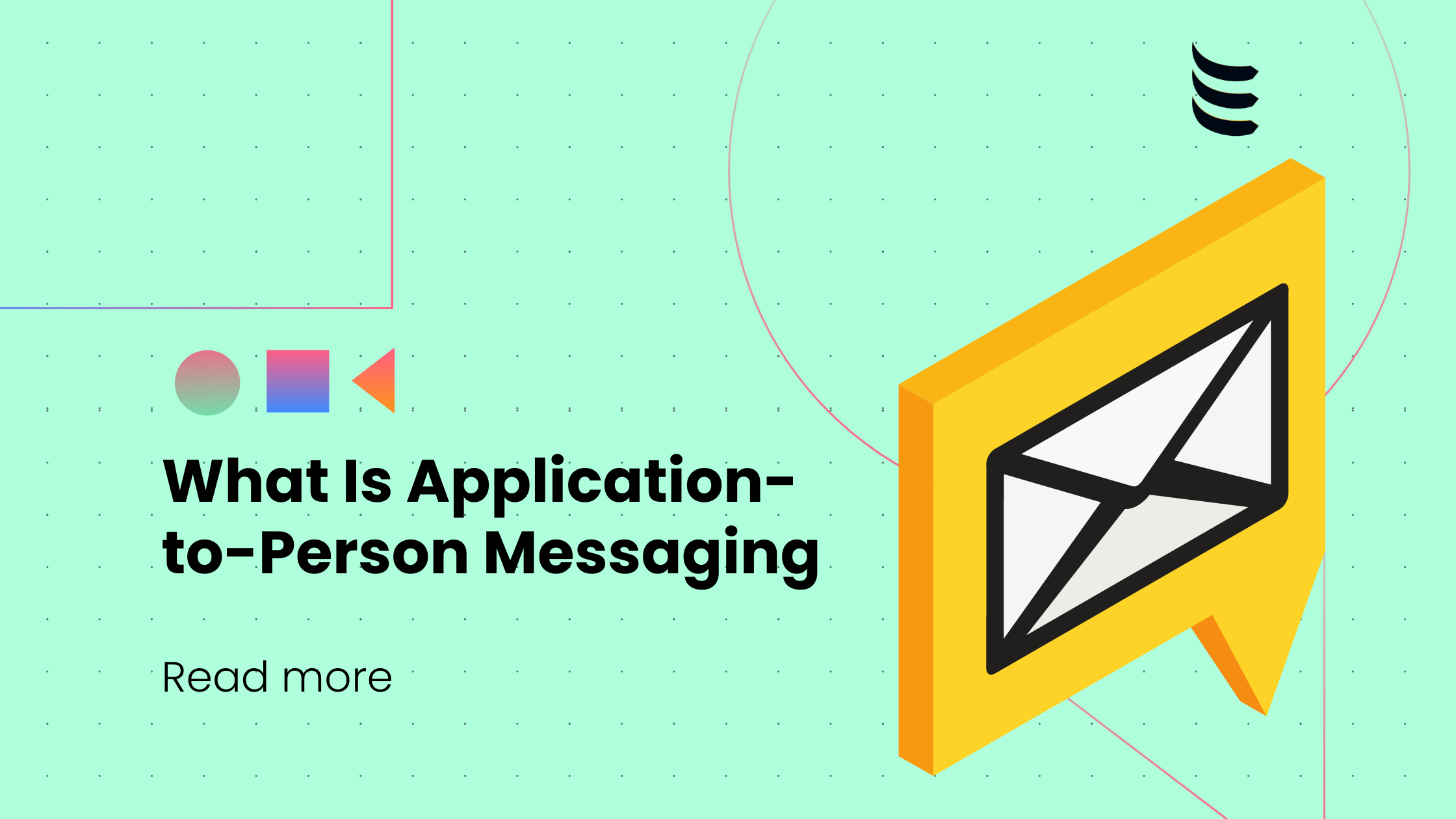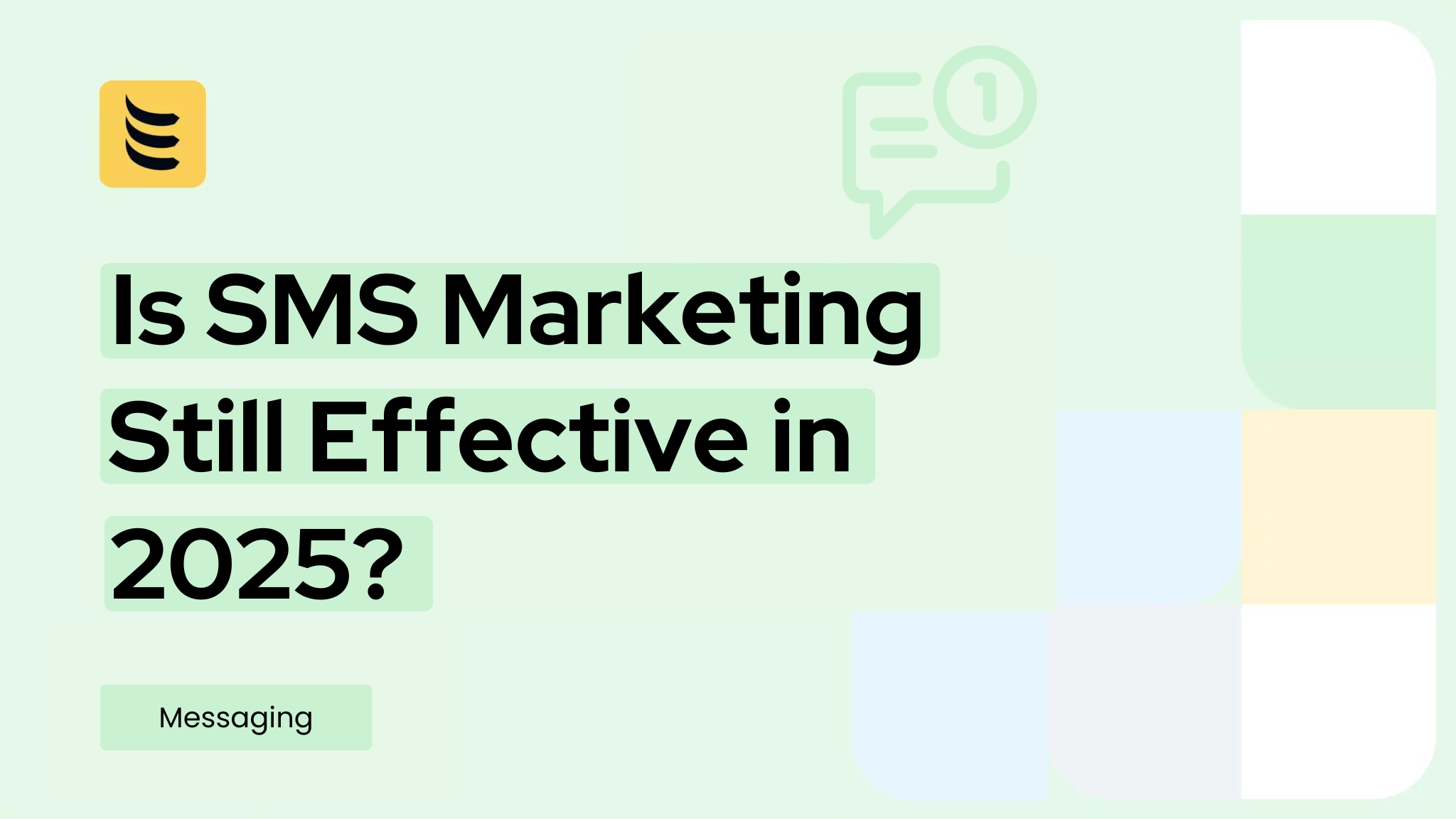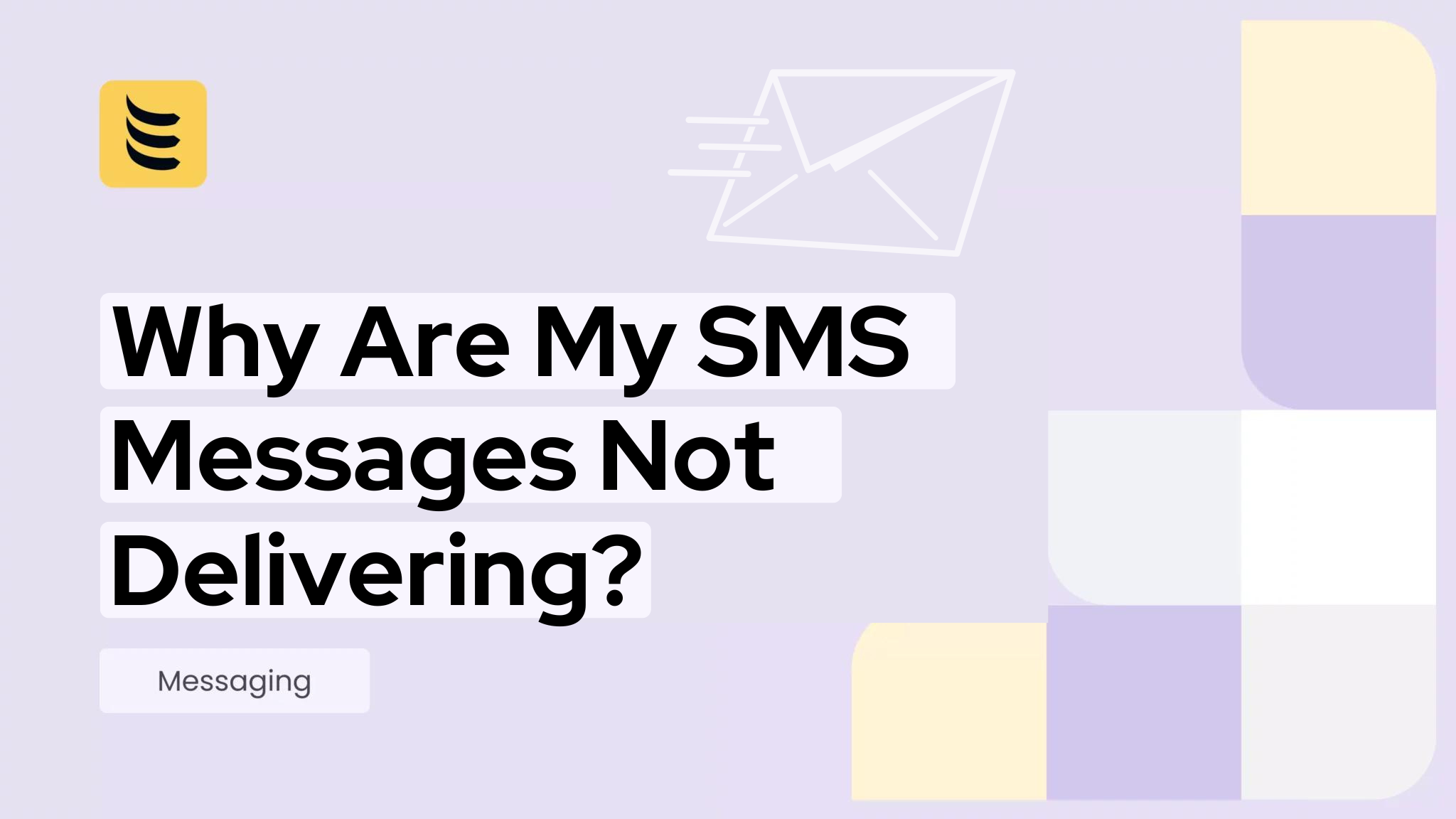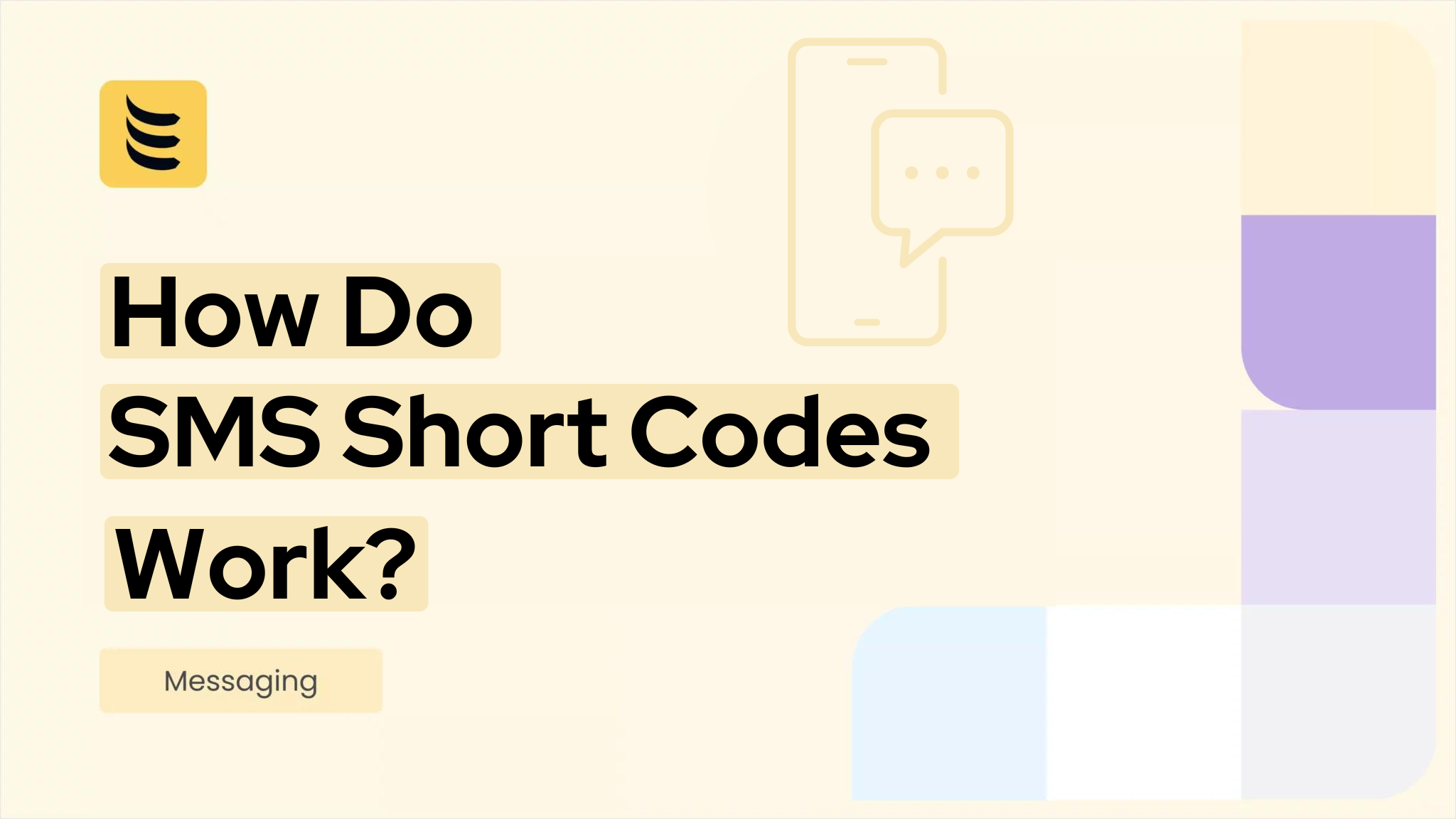In the age of the digital consumer, customer experience or CX has become a key differentiator between brands and a benchmark for commercial success. Organizations that deliver an excellent CX are positioned to thrive and retain a competitive advantage.
A big part of a great experience is of course making good on your brand promise by providing the products or services you offer on time and in adherence to the highest quality standards. Just as important, however, is keeping your customers in the loop at all times.
If you can enable and empower your customers to communicate with your business the way they want to, using the apps that they like, you’re in a winning position.
With many consumers now reliant on their mobile devices for interacting with brands, business text messaging is one of the best communication options available. However, buyers also now spend much of their time on social media and other digital platforms, meaning businesses face the challenge of reaching their customers with messaging via these platforms as well.
This is where application-to-person messaging or A2P SMS comes into the picture.
What Is A2P SMS?
Application-to-Person messaging is a type of short message service (SMS) communication technique whereby a software application that’s run by an enterprise sends a text message to a consumer’s device. For this reason, A2P SMS is also known as business SMS, or enterprise SMS.
Application-to-person messaging sits in contrast to P2A or person-to-application messaging, where a customer initiates an SMS conversation with a software application. Viewers voting for their favorite reality show contestant in a setting like Big Brother is an example of this.
In an A2P SMS scenario, communication between the enterprise and the consumer is typically one-way, with messages not requiring a direct response. This makes application-to-person messaging ideal for business use cases like marketing campaigns, the sending of promotional codes, appointment reminders, bank alerts, and shipping notifications.
| Some Facts | Details/Figures |
|---|---|
| Global A2P SMS Volume | Estimated at 2.5 trillion messages annually in 2025 (projected to grow further). |
| Revenue | A2P SMS market revenue is projected to exceed $75 billion globally by 2025. |
| Delivery Modes | – SMS (Traditional messaging, largest share of A2P traffic) – RCS (Rich Communication Services, growing in adoption) – OTT Apps (WhatsApp, Telegram, etc.) |
| Message Types | – Promotional: Marketing offers, discounts, campaigns. – Transactional: OTPs, alerts, appointment reminders. – Conversational: Two-way customer interactions, support. |
| Open Rate | SMS boasts a 98% open rate, with most messages read within 3 minutes of delivery. |
| Usage by Industry | – Retail: Promotional offers, sales updates. – Banking: OTPs, fraud alerts. – Healthcare: Appointment reminders. – Logistics: Delivery status updates. |
| Emerging Trends | – Shift towards RCS for richer multimedia content. – Growth in conversational messaging via AI-powered bots. – Integration with omnichannel platforms. |
| Reach | SMS reaches 5+ billion mobile users globally, including feature phones. |
Real-World Example: A2P SMS in Action
Let’s follow Sarah’s online shopping experience to understand how A2P SMS works in practice:
The Customer Journey with A2P SMS
- Order Placement
- Sarah orders a new laptop from TechStore.com
- Immediately receives text: “Thank you for your order #12345 from TechStore! Total: $899.99. Est. delivery: March 24-25”
- Payment Processing
- Bank sends automated SMS: “Your credit card ending in 4321 was charged $899.99 at TechStore”
- Simultaneously, Sarah receives 2FA code: “Enter code 847596 to confirm your TechStore purchase”
- Order Processing
- Next day, receives update: “Good news! Order #12345 is being packaged at our warehouse”
- Later that day: “Your TechStore order has shipped! Track at: [link]”
- Delivery Updates
- Day before delivery: “Your laptop will be delivered tomorrow between 2-4 PM”
- Day of delivery: “Driver John is 3 stops away. Reply RESCHEDULE if you’re not home”
- Post-Purchase
- Two days after delivery: “How’s your new laptop? Rate your experience: [link]”
- One week later: “Register your warranty by March 30 to get an extra 6 months coverage: [link]”
This example demonstrates how multiple businesses (retailer, bank, delivery service) use A2P SMS to:
- Drive additional actions
- Confirm transactions
- Enhance security
- Provide real-time updates
- Improve customer service
- Generate feedback
How Does Business SMS Work?
Business SMS is typically a subscription-based or consent-driven service. Using a mobile network connection, consumers will usually opt in to subscribe to text message notifications that allow them to interact with various brands.
On the enterprise side of the equation, A2P SMS gives businesses the opportunity to automate text messaging for purposes like issuing appointment reminders, alerts, sales offers, banking PINs, and other short-form communications. Modern A2P SMS solutions include features that enable businesses to personalize their text messages, manage recipient lists, and use trusted routes to deliver their messages.
In the US and Canada, network carriers consider all messaging that passes through messaging application platforms to be A2P. For US commercial organizations, US A2P 10DLC is a system that allows businesses to send A2P messages via standard 10-digit long code (10DLC) phone numbers.
Under the US A2P 10DLC standard, businesses can register their brands and SMS campaigns with mobile carriers. In return, the carriers provide registered businesses with high-volume messaging and agreed delivery standards.
Common Applications of Enterprise SMS
Use cases for enterprise SMS are increasing as digital platforms evolve to enable new avenues of business communication and data management. Some common applications of A2P SMS include the following.
Two-Factor Authentication (2FA) or Multi-Factor Authentication (MFA)
As organizations look to frustrate the attempts of cybercriminals and hackers to gain access to consumer accounts, many enterprises are turning to multi-factor or two-factor authentication to boost account security or verify changes to a user’s account. Here, enterprise SMS applications will typically send a One-Time Password (OTP) to the user’s mobile device to verify their identity and/or confirm a particular transaction.
Real-Time Alerts
Organizations can configure A2P SMS systems to send real-time alerts to consumers in response to certain types of activity. For example, suspicious account activity may automatically trigger the transmission of an anti-fraud alert to the account holder.
Customer Support
In line with the business-critical importance of customer satisfaction and CX, organizations can use enterprise SMS to provide customer support and assistance via popular social media platforms and applications like Facebook Messenger and WhatsApp.
Ticketing and Reservation Systems
Organizations can turn to application-to-person messaging applications to provide real time confirmations and updates. For example, companies in the travel and hospitality sector use A2P SMS to keep guests and passengers up to date concerning their reservations and tickets.
Device-to-Device Communication
Internet of Things (IoT) technologies now routinely monitor and manage smart homes, smart vehicles, and infrastructure deployments. This has created an inter-device communications ecosystem within which A2P SMS messaging can issue device alerts and notifications between smart devices.

Benefits of A2P SMS
High Open Rates
SMS messages achieve an impressive 98% open rate, significantly higher than email marketing. Most texts are read within three minutes of receipt, making A2P SMS an extremely effective communication channel.
Global Reach
SMS technology works on virtually every mobile phone worldwide, regardless of internet connectivity or smartphone capabilities. This universal compatibility ensures messages reach customers anywhere.
Cost-Effective Communication
Compared to traditional marketing channels, A2P SMS offers an excellent return on investment. Businesses can reach large audiences instantly without incurring substantial costs associated with print or broadcast media.
Enhanced Customer Experience
A2P SMS enables timely, relevant communication that adds value to the customer journey. From important alerts to personalized offers, these messages help businesses maintain meaningful connections with their audience.
Best Practices for Application-to-Person Messaging (A2P SMS)
In order to get the most out of Application-to-Person messaging, you first need to understand where exactly your organization will benefit from an A2P SMS solution. Begin by making a full assessment of how your enterprise could use a 24/7 instant communication channel with your customers that delivers helpful content which improves their lives and their interactions with your brand.
Taking a customer-centric approach to this assessment is best. Look at your buyer personas and Ideal Customer Profile (ICP) and consider their aspirations, the challenges they face, and any pain points they may have. Develop strategies and content for SMS text that can address all of these issues.
Be Clear and Concise
Clear, concise, and straightforward messages are best, when using A2P SMS. Text language should be easy to read and comprehend, with a specific purpose or call to action.
Use Appropriate Timing
Sending messages early in the morning or late at night is generally not a good idea. Use your understanding of the target audience to schedule the most appropriate days and times for sending business SMS communications.
Customize and Personalize Your Messages
Try to include personal touches, such as the customer’s name, to create a stronger connection with your A2P SMS communications. You should also customize your application-to-person messaging to reflect the needs and preferences of each target audience.
Use APIs to Simplify SMS Integration
An SMS API or Short Message Service Application Programming Interface can greatly simplify the task of connecting apps to multiple messaging platforms. SMS APIs enable software developers to integrate SMS functionality into their own applications, websites, or systems, facilitating the automation of SMS communication.
Choose the Right Partner
In order to ensure the success of your A2P SMS efforts, you should choose a partner that can provide you with an enterprise-grade service.
IDT Express is committed to powering enterprises to craft unbeatable SMS experiences for their customers globally. With IDT’s SMS API, you can drive engagement and sales in just a few clicks and create your highest revenue channel with personalized campaigns that convert.
With IDT Express Queuing, you can easily schedule SMS, MMS, or WhatsApp messages to be sent at a specific date and time in the future with a simple APl call. IDT’s Opt-out Management feature ensures that you can seamlessly handle SMS opt-out requests from customers and automatically register them in your system to maintain compliance and provide exceptional customer service.
To learn more about how the IDT Express SMS API can contribute to your A2P SMS communications and marketing, book a demo.




